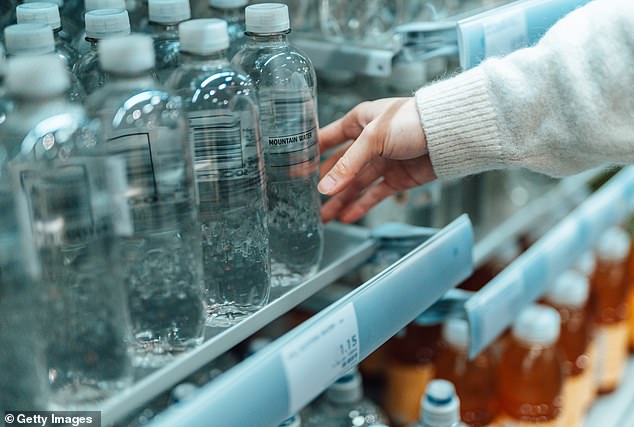
Bottles of plastic water contain hundreds of thousands of toxic microscopic plastic particles, new research has found.
Drinking water from a bottle could mean you are contaminating your body with tiny bits of plastic, which scientists fear can accumulate in your vital organs with unknown health implications. Nanoplastics have already been linked to cancer, fertility problems, and birth defects.
Scientists using the most advanced laser scanning techniques found an average of 240,000 plastic particles in a one-liter bottle of water, compared to 5.5 per one liter of tap water.
University of Columbia researchers tested three popular brands of bottled water sold in the United States and, using lasers, analyzed the plastic particles they contained down to just 100 nanometers in size.
These microscopic particles carry phthalate chemicals that make plastics more durable, flexible, and lasting longer.
Phthalate exposure is attributed to 100,000 premature deaths in the US each year. The chemicals are known to interfere with hormone production in the body.
They are ‘linked with developmental, reproductive, brain, immune, and other problems’, according to the National Institute of Environmental Health Sciences.
The highest estimates found 370,000 particles.
Nanoplastics had been too difficult to detect using conventional techniques, which could only find microplastics ranging from 5mm down to 1 micrometer – a millionth of a meter, or 1/25,000th of an inch.
Groundbreaking research in 2018 found around 300 microplastic particles in a liter of bottled water, but researchers were limited by their measurement techniques at the time.
Research is now underway across the world to assess the potentially harmful effects.
The team used a new technique called Stimulated Raman Scattering (SRS) microscopy, which was recently invented by one of the paper’s co-authors.
The method probes bottles with two lasers tuned to make specific molecules resonate, and a computer algorithm determines their origin.
The results showed that nanoparticles made up 90 percent of these molecules, and 10 percent were microplastics.
Study co-author Professor Beizhan Yan, an environmental chemist at Columbia, said: ‘This was not surprising, since that is what many water bottles are made of,’ said.
He continued: ‘PET is also used for bottled sodas, sports drinks, and products such as ketchup and mayonnaise.
‘It probably gets into the water as bits slough off when the bottle is squeezed or gets exposed to heat.’
Another plastic particle found in bottles of water, and one which outnumbered PET, was polyamide – a type of nylon.
‘Ironically,’ said Professor Yan, ‘this probably comes from plastic filters used to supposedly purify the water before it is bottled.’
The other common plastics found included polystyrene, polyvinyl chloride (PVC), and polymethyl methacrylate, all of which are used in various industrial processes.







